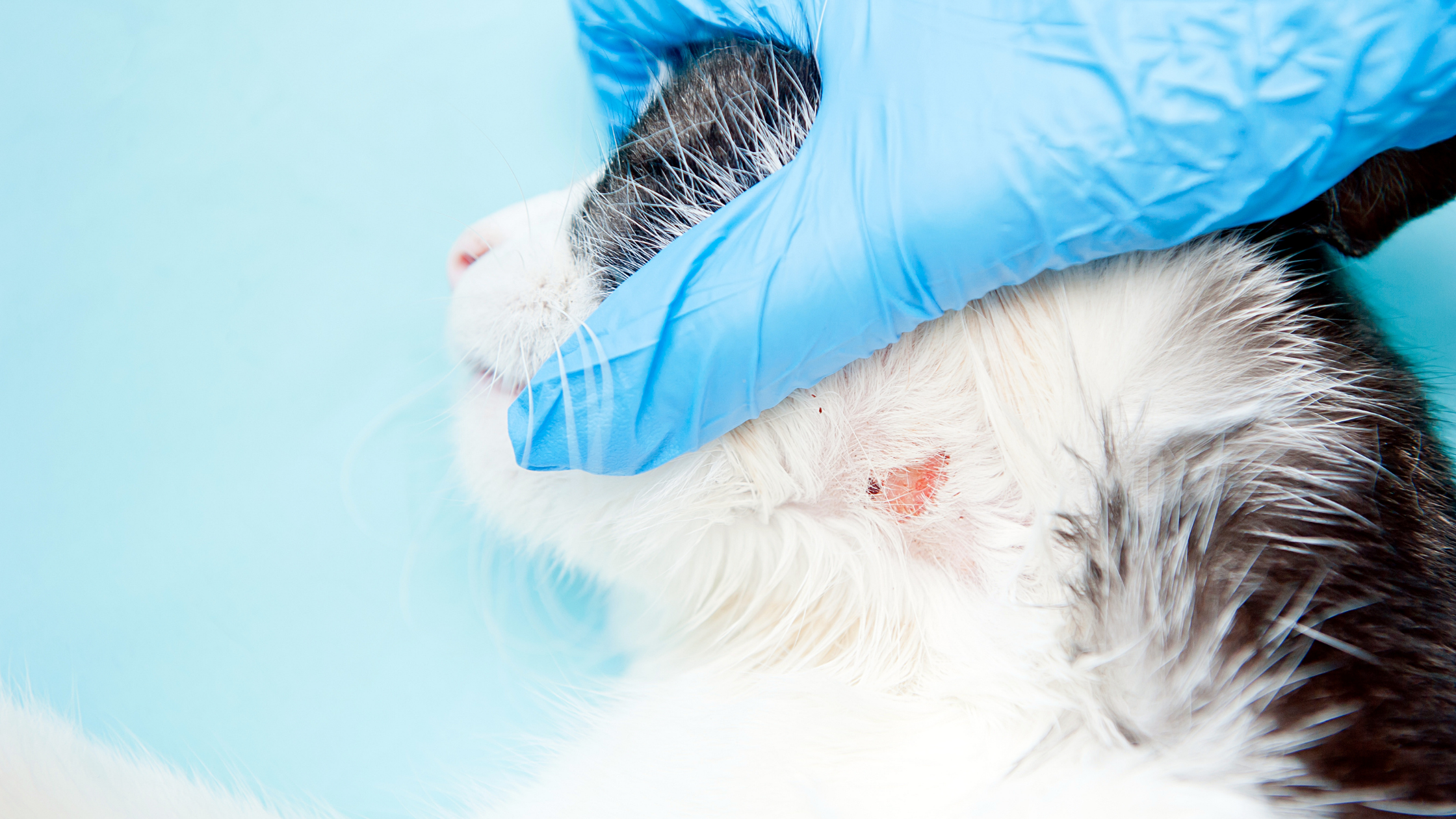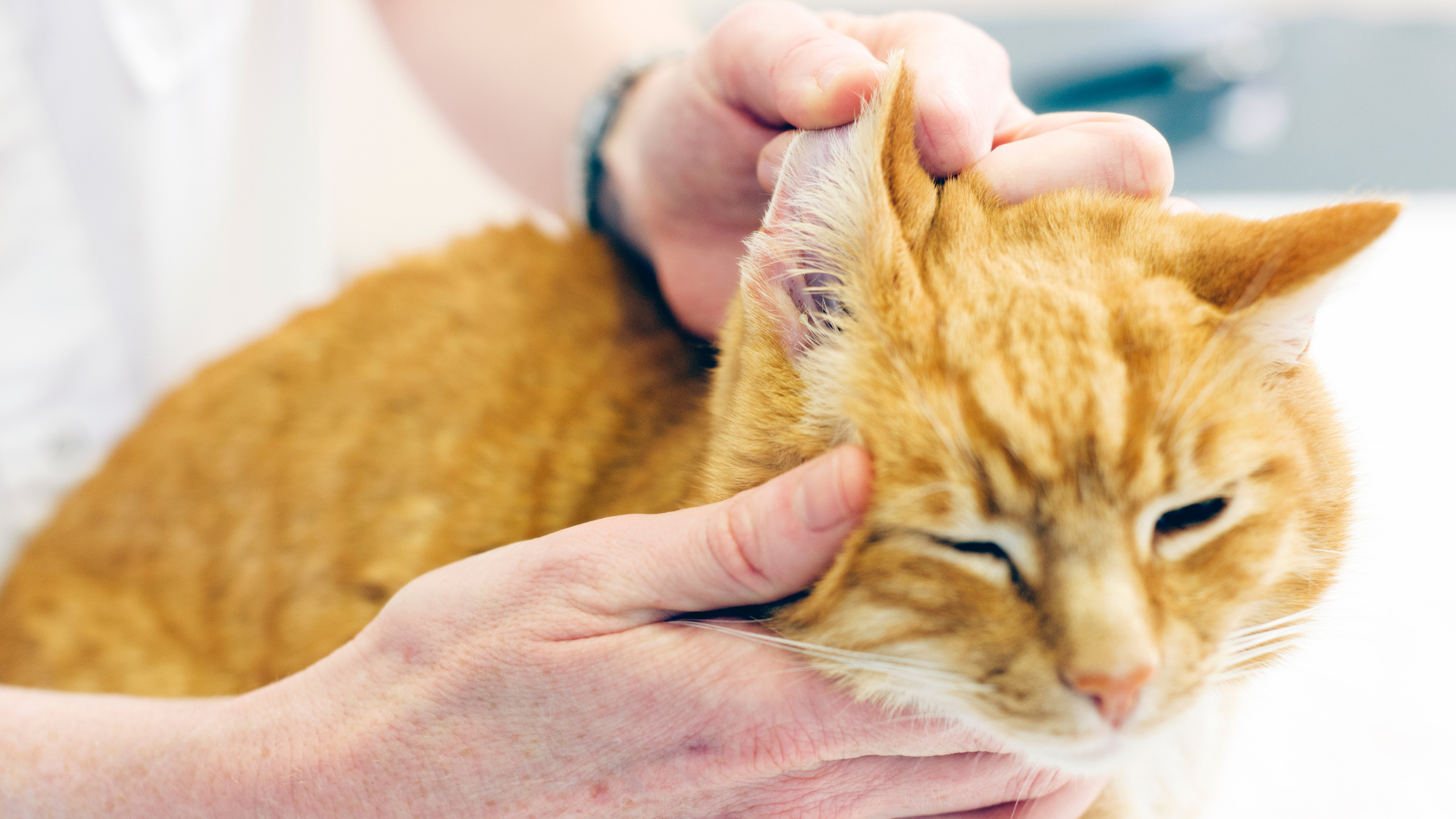Doing a regular monthly home wellness examination on your cat is a great way to keep track of subtle changes in your feline's health or actions.
Learning how to do regular nose-to-tail check-ups will help you remain on top of your cat's health. By checking your cat regularly, you can keep tabs on how your cat is doing between vet visits with nose-to-tail check-ups in the house.
As a routine, running your hands all over your cat's body whenever they are snuggling with you or you're grooming them. This is the best way to spot issues before they become major. Call your vet if you find anything that concerns you.
Spend Time on Your Cat's Skin

Run your hands all along the cat's entire body with gentle pressure. If your cat reacts with pain in any one area, or if you observe any lumps as well as bumps, take your cat to your vet.
While cuddling your cat, really feel for any swellings, scratches, scabs, or any other irregularities. Dandruff, oiliness, or abnormalities on the fur may be signs of skin or internal issues. Part the hair to look for fleas; specks that appear like black pepper are, in fact, "flea dirt" flea feces that has your cat's blood and turn red when damp). Be wary of any lumps, especially if they appear after an injection.
Your cat's coat needs to be complete and glossy. The skin should not be dry as well as flaky.
If your feline is cleaned, round off your test with a good grooming session. Grooming is good for removing loose hair, dispersing oils as well as boosting blood circulation. Grooming likewise helps avoid hairballs, which cats cough up after they have swallowed excessive hair from brushing themselves or another cat in the home.
Examine Your Cat's Ears

The ears must be clean as well as completely dry. You can carefully clean up some ear wax by dipping a cotton round into a warm water and vinegar concoction. If you see any discharge or odor from the ear canal, this might suggest infection.
The hairless part of your feline's ears ought to be clean and odorless. Look for flaking, scabs, foul smell, or discharge. If your cat is having troubles, it might scratch its head a great deal and damage the ears. A brownish, coffee-ground-like, or red discharge from the ear might be a sign of ear mites. These are bloodsuckers that trigger severe itching and are contagious to other pet cats.
Spy Into Your Cat's Eyes

Eyes must be clear and bright, without discharge. Your cat's third eye cover may often come partially across the eye when he's sleepy. However, it does not need to show up at all times. Pupils must be equal in size, as well as respond to adjustments in light. Look for bright, clear, equally concentrated eyes. If you see soreness, discoloration or discharge, squinting, or the emergence of the 3rd eyelid, your cat might have an health issues that requires you contact to your veterinarian.
Make Time for Your Feline's Mouth

Healthy periodontal are pink, light, or bright; red gums may mean something is wrong with your cat. Drooling and pawing at the mouth is a cause for concern as well. Brownish touches, as well as tartar accumulation on the teeth, may suggest a dental disease. If your cat's breath smells so bad that you can not stand to have them near you, it's possibly time for a vet to have a look.
Other indicators of more advanced oral illness are problem eating, extreme drooling, and pawing at the mouth.
Get Nosey With Your Cat

Your cat's nose must be moist and clean; there shouldn't be any discharge or bleeding. Depending on the cat's activity and the temperature around them, the nose may be cold or warm. If your cat paws at their nose or sneezes regularly, or if you see mucous or other discharge, contact your veterinarian.
Have A Look Under Your Cat's Tail

Look under their tail. If you notice what appears to be spaghetti or grains of rice, you are looking at signs of parasites, a few of which might spread to you or other pets. Your vet can offer you medicine to free your feline of these undesirable guests.
Concentrate on Your Feline's Feet

Most felines do not like to have their feet touched. If your cat doesn't mind, try to find stuck-on litter, torn claws, cuts, swellings, or infections. Likewise, check your cat's claws routinely to see if they need to be trimmed. Untrimmed nails can unintentionally hurt you, get caught on carpet fibers and furnishings, and even grow into the paw.
You need to trim your cat's claws periodically. If you have a problem cutting your cat's nails, get someone to help you or take your cat to the grooming center for a nail trim. This is likewise an excellent time to inspect the toenails or injuries to the paw pads.
Check Your Cat's Breathing

Your cat's breathing needs to be smooth and easy. A cat's typical respiratory rate at rest is between 20-30 breaths per minute. You can measure this by counting your cat's breathing for 15 seconds and multiplying it by four. Wheezing and coughing are indicators of possibly significant troubles. Fast, labored, or open-mouth breathing can be life-threatening as well as calls for emergency attention.
Monitor Your Cat's Weight
Your cat's weight can be a great indicator of their health and wellness—but only if you keep an eye on it. Progressive weight loss or gain can be challenging to identify in pet cats. Ideally, you ought to purchase an affordable digital scale made for babies. These scales process pounds and ounces precisely. You can similarly weigh yourself on a regular bathroom scale, then weigh in again while holding your cat. While not as accurate as an infant scale, this will still allow you to note some changes.
Check Your Cat's Hydration

Gently pinch the skin in between the shoulder blades right into what looks like a camping tent. The skin must spring back right into its original placement practically immediately. An additional way to check for hydration is to see that the gums are damp to the touch.
Do Not Self-Medicate
Never offer your cat any medicine without your vet's suggestions. Numerous human medications such as aspirin, acetaminophen (Tylenol), flu medications, anti-cancer medicines, diet pills, and anti-depressants can poison your cat. Additionally, human vitamins can be toxic.
Be Book Smart
All owners should learn cat care (ask your veterinarian for a suggestion) that includes a section on emergency treatment. While you should never attempt to be your vet, you can learn some emergency treatments that might reduce damages and keep your pet relatively comfortable en route to the vet. Now is the time to inform yourself.
Build a first-aid kit for your pet. Constantly have a basic pet first-aid set available, even when you are traveling with your feline. If something goes wrong, you'll be thankful you planned, and so will indeed your pet cat.
Conclusion
By doing this regular monthly check and keeping tabs on your cat's normal behavior, you'll have the ability to see any change immediately and make sure that any troubles are addressed before they end up being severe.




















